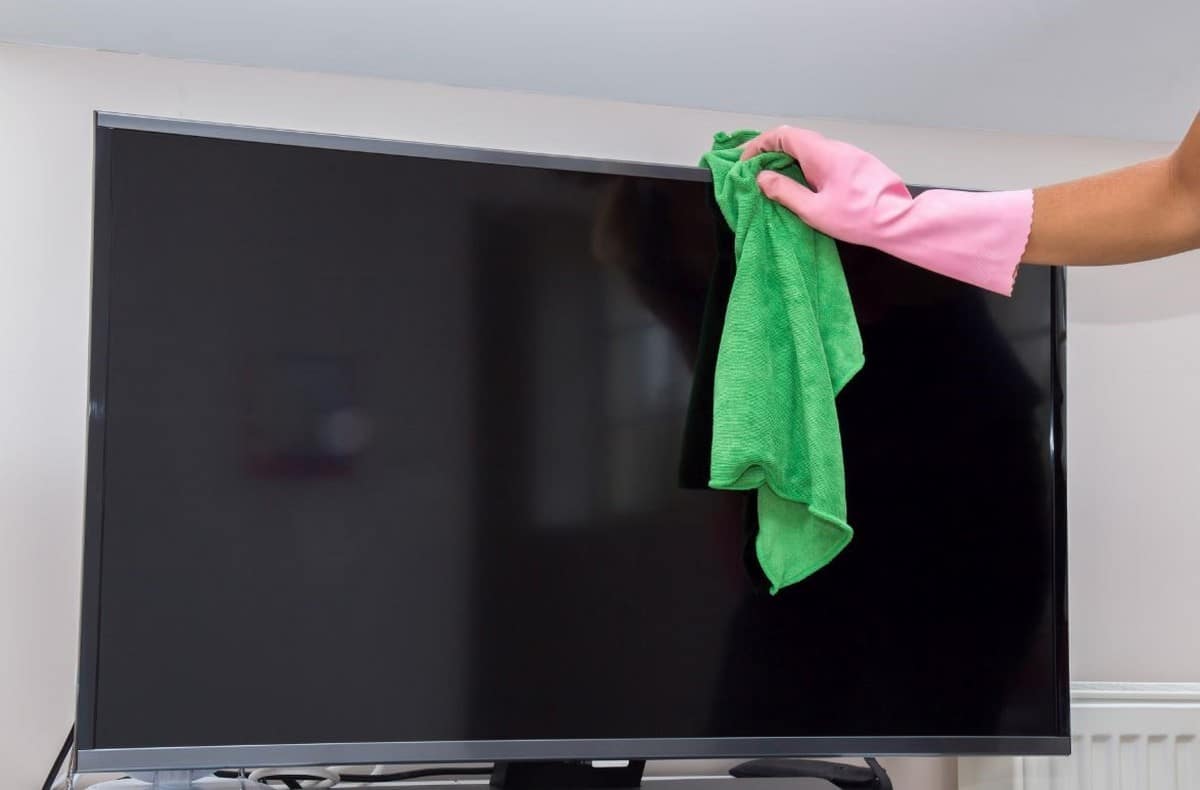Modern screens such as OLED, LCD or LED TVs are very bright, very responsive and very sharp. That's why even the smallest stains on our screens prompt us to clean them. When it comes to cleaning a screen, you always have to be careful, because at any moment, the slightest wrong move or handling can damage your device.
Clearly, keeping our office equipment such as computer monitors, keyboards, televisions and so on neat and tidy is a must. Not only for the beauty of the room, but also to find peace in using them.
Please note that these appliances cannot be cleaned with window cleaners, or with the same cloth you use in your kitchen. Doing so only shortens the life of your equipment. Among office equipment, the screen is one of the most difficult to clean because it is so fragile and requires great care when cleaning.
Therefore, we're going to show you the safest steps to take to clean an OLED screen safely in this article.

First step: the preparation phase
For this first part, you first need to turn off your screen. As a safety precaution, it is highly recommended to unplug the power cord to ensure that the device no longer functions, and above all to avoid short circuits should this occur. It's important to know that the screen should not be cleaned if it's still hot, because a hot screen is more likely to be damaged and especially difficult to clean.
In this preparation phase, you can prepare the site where you want to clean and remove most dust using a dusting can. To do this, you need to hold it vertically at a minimum distance of 30 centimetres from your screen. This will dislodge most of the dust and debris adhering electrostatically to the screen.
Second step: the cleaning phase and tools
For this phase, under no circumstances should you use paper towels or even a cloth that you use for your household chores. As mentioned above, modern screens are very delicate. However, the cloths you use for your household chores are often quite rough, while paper towels are rough and can cause scratches on your screen.
Use a microfiber cloth
To carry out this cleaning phase, we recommend the use of a microfiber cleaning cloth quality. This is because its polyamide content retains cleaning water and its microfiber polyester content attracts oil from your screen. Indeed, you can safely and effectively remove stubborn stains and bulky debris from your screen. If you just want to remove the dust that's scattered across your screen, you can do as little as a swiffer.
Don't spray liquids directly onto your screen
Admittedly, we've all done it before, because the risk of damaging the 2 cm-thick CRT screens of older models is less likely. But it's worth bearing in mind that doing this with today's screens only increases the chance of damaging them.
If you want to clean an OLED screen properly, soak your cloth cleaning products and then wipe the screen with, but do not spray directly these liquids on your screen.
In addition, flat screens and even high-definition TV sets are designed using several thin and very thin layers. As a result, liquids can easily seep through these layers and damage your screen.
Choose gentle cleaning products
To clean your OLED screen properly, never use ammonia-based liquids or even alcohol-based cleaners. This is because these products can easily damage thin layers that make up your screen and leave whitish marks when it dries.
To do this :
- Soak one side of your microfiber cloth by cleaning products containing only a small amount of small amount of water. Be careful not to let your cloth get too wet, but slightly dampened.
- Rinse your screen with this cloth and once you've finished, you need to wipe it dry of your cloth to avoid water marks or streaks.
And that's how to clean an OLED screen without damaging it. If you'd like more tips on how to clean your digital devices, take a look at our articles such as how to clean your ACER Aspire laptop For example.






